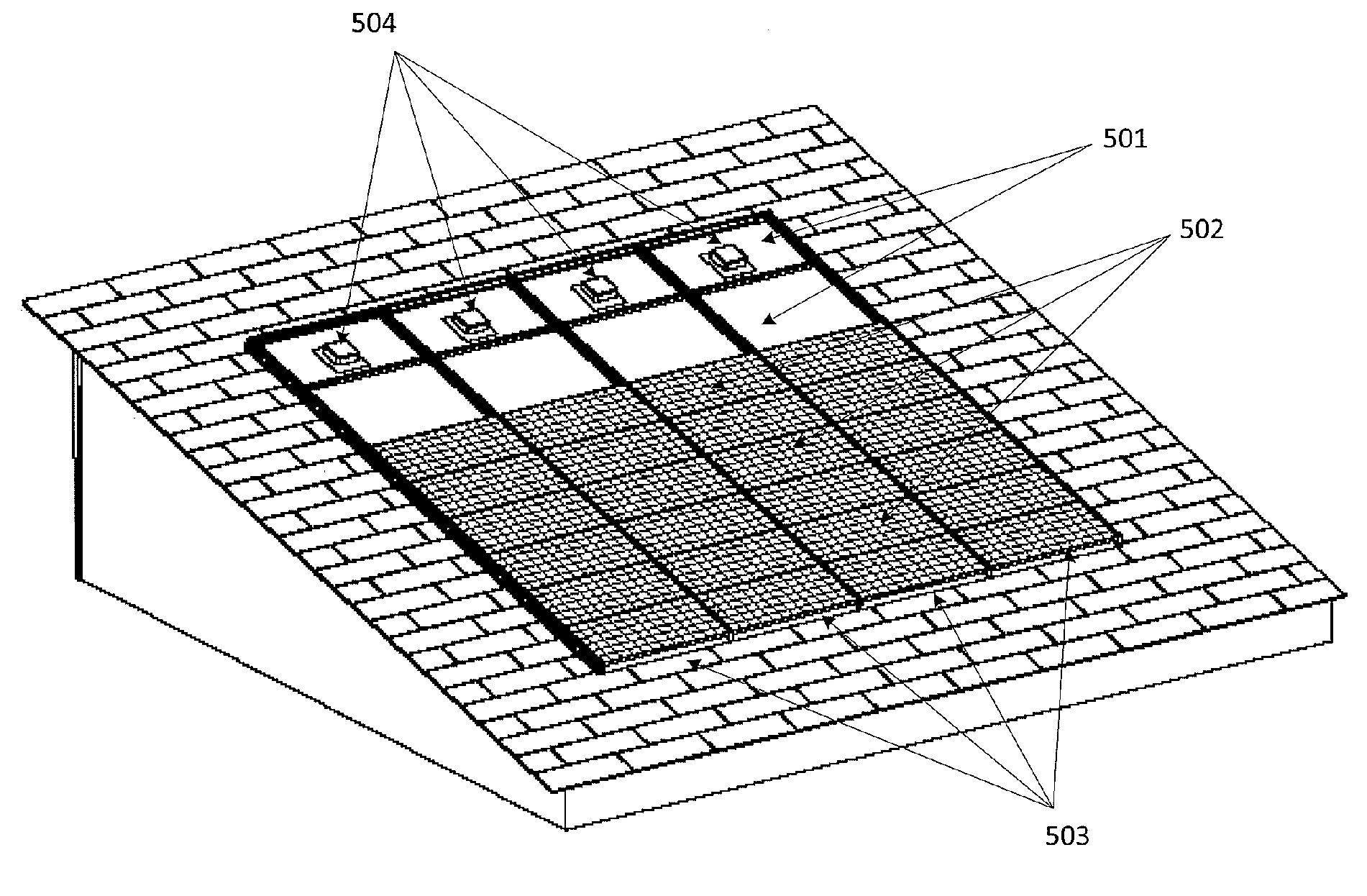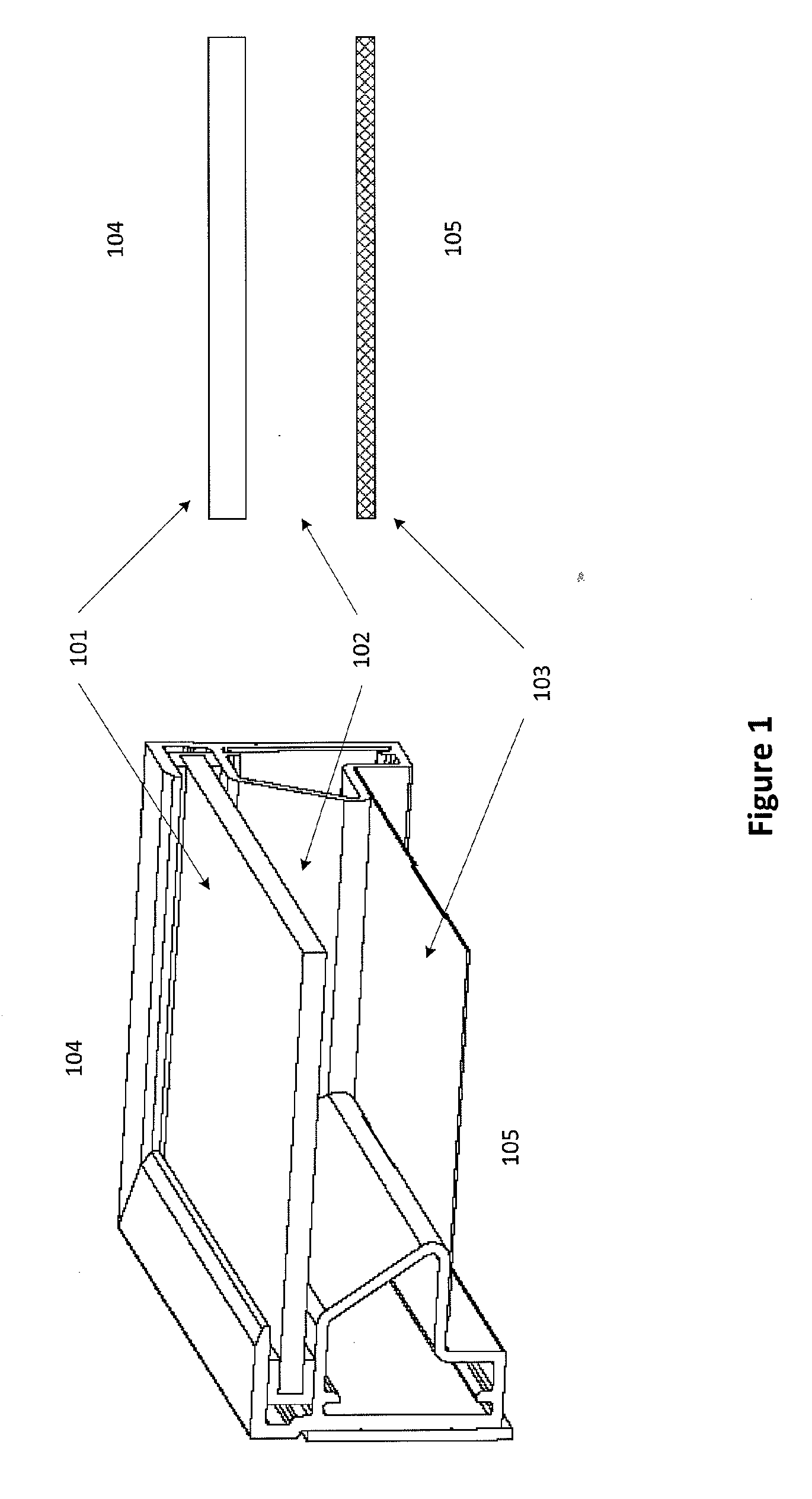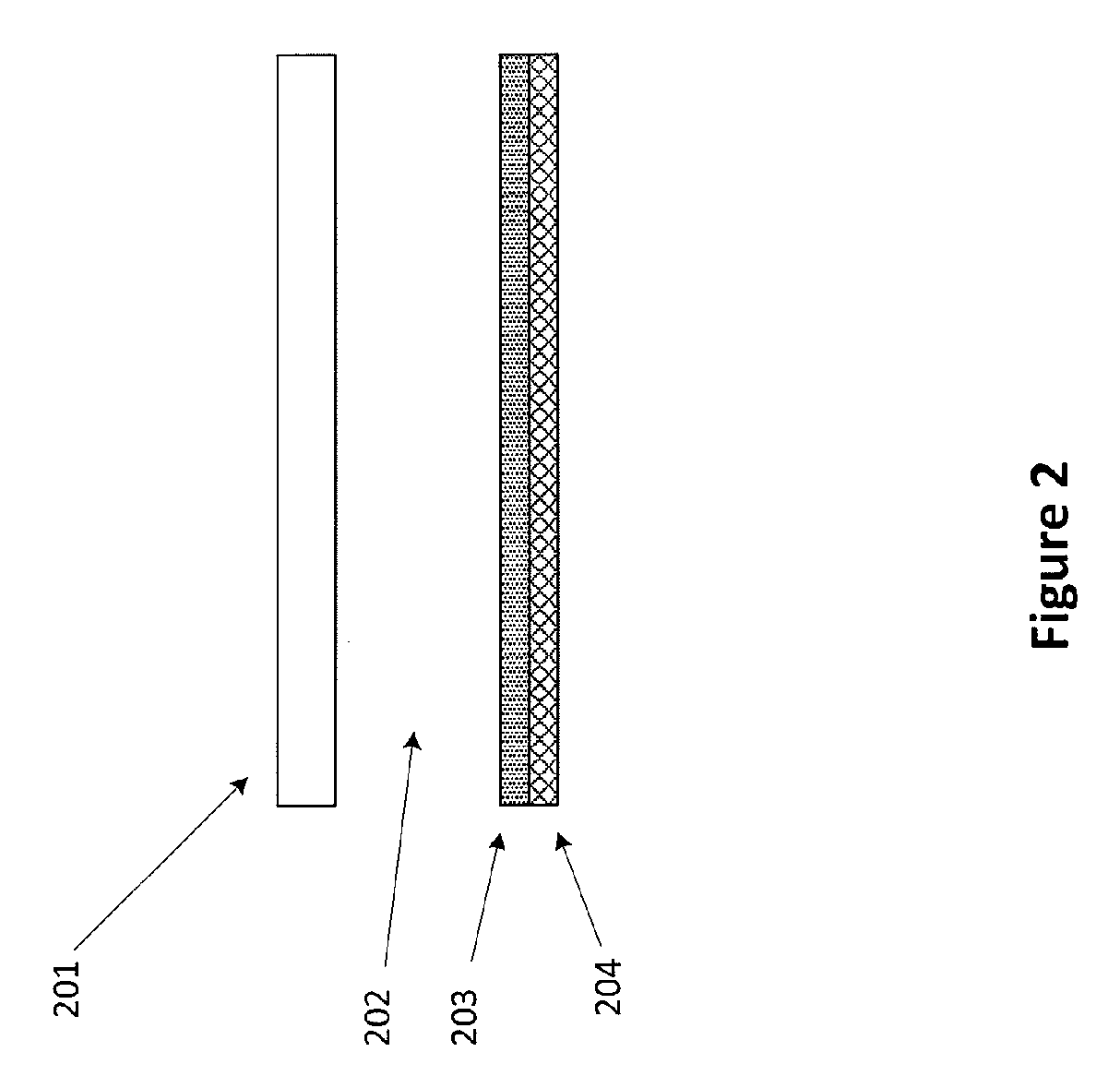Method and structure for hybrid thermal solar module
a solar module and hybrid technology, applied in the field of solar devices, can solve the problems of increasing the rate of warming, increasing the sea level, and reducing the efficiency of solar energy generation
- Summary
- Abstract
- Description
- Claims
- Application Information
AI Technical Summary
Benefits of technology
Problems solved by technology
Method used
Image
Examples
Embodiment Construction
[0021]According to the present invention, techniques related to solar devices are provided. More particularly, the present invention provides a method and system including a combined thin film photovoltaic and thermal solar system, which takes advantage of a single form factor, according to a specific embodiment. Alternatively, the present method and system can be applied to other types of photovoltaic materials, such as crystalline silicon, polysilicon, organic photovoltaic materials, and others. Merely, by way of example, the present invention has been applied to a thermal solar module configured on a building structure, but it would be recognized that the invention has a much broader range of applications.
Hybrid PV / Thermal Flat-Plate Collector
[0022]In a specific embodiment of solar thermal collectors, a glazing is used to improve the performance of the collector. As used herein, the term “thermal collectors” can be devices that convert the sun's energy into heat, although there c...
PUM
 Login to View More
Login to View More Abstract
Description
Claims
Application Information
 Login to View More
Login to View More - R&D
- Intellectual Property
- Life Sciences
- Materials
- Tech Scout
- Unparalleled Data Quality
- Higher Quality Content
- 60% Fewer Hallucinations
Browse by: Latest US Patents, China's latest patents, Technical Efficacy Thesaurus, Application Domain, Technology Topic, Popular Technical Reports.
© 2025 PatSnap. All rights reserved.Legal|Privacy policy|Modern Slavery Act Transparency Statement|Sitemap|About US| Contact US: help@patsnap.com



